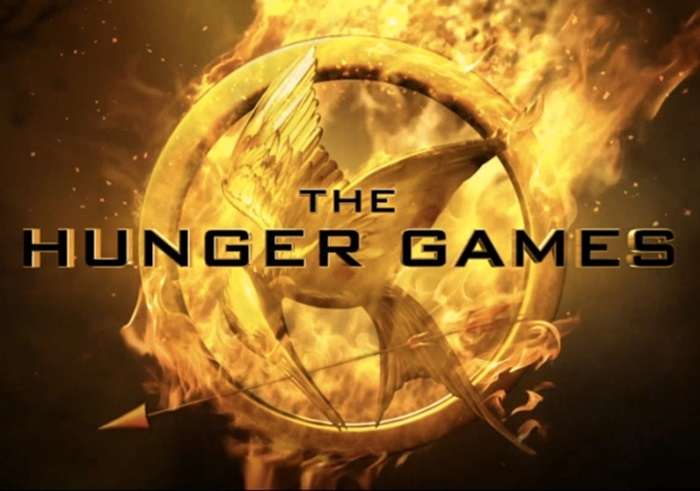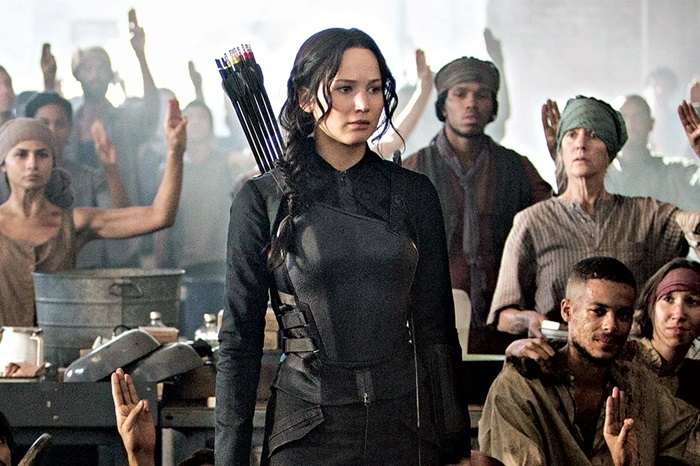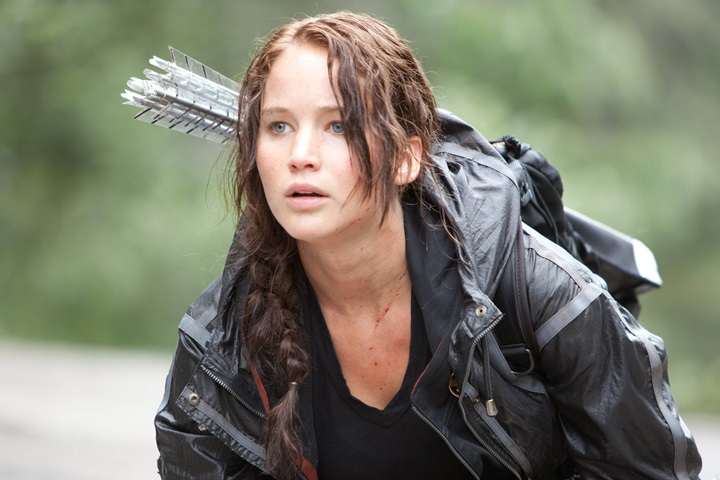With its unique mix of action, drama, and a gripping portrayal of rebellion against oppression, the Hunger Games movies remain relevant and continue to inspire debates about society and power. If you’re planning a movie marathon or just want to revisit the series, here’s a guide to watching all the Hunger Games movies in order.
The Hunger Games Series Overview

Before diving into the films in order, it’s important to understand the foundation of the Hunger Games story. The setting is a future dystopian society called Panem, divided into 12 districts ruled by the Capitol. Every year, each district is required to send one boy and one girl, known as tributes, to compete in the Hunger Games, a deadly battle where only one can survive.
The protagonist, Katniss Everdeen, becomes a symbol of rebellion against the Capitol after volunteering to take her sister’s place in the Hunger Games. As she navigates this dangerous world, the stakes grow higher with each movie.
The Four Movies in Order
- The Hunger Games (2012)
- The Hunger Games: Catching Fire (2013)
- The Hunger Games: Mockingjay – Part 1 (2014)
- The Hunger Games: Mockingjay – Part 2 (2015)
Now, let’s take a deeper look at each movie in the order they were released.
1. The Hunger Games (2012)
Plot Summary:
The first movie introduces us to Katniss Everdeen (played by Jennifer Lawrence), a 16-year-old girl from District 12, the poorest of Panem’s districts. After her sister, Prim, is selected as a tribute for the Hunger Games, Katniss volunteers to take her place. Along with fellow District 12 tribute, Peeta Mellark (Josh Hutcherson), Katniss enters the deadly arena, where she must rely on her instincts and skills to survive.
Key Themes:
- Survival: Katniss’ ability to stay alive in the Hunger Games demonstrates her resilience and adaptability.
- Oppression: The Capitol uses the Hunger Games as a means of keeping the districts in check, showcasing the consequences of unchecked power.
- Sacrifice: Katniss’ decision to volunteer in her sister’s place is the first of many selfless acts in the series.
Memorable Moments:
- Katniss’ fiery “Girl on Fire” entrance.
- The emotional death of Rue, the young tribute from District 11, and Katniss’ tribute to her.
- The climactic ending where Katniss and Peeta threaten to eat poisonous berries, forcing the Capitol to declare them both victors.
Why It Stands Out:
This movie sets the tone for the entire series, introducing viewers to the harsh realities of Panem, the strength of Katniss as a heroine, and the complexities of the Hunger Games themselves. The performances, particularly from Jennifer Lawrence, are raw and powerful, grounding the fantastical premise in emotional depth.
2. The Hunger Games: Catching Fire (2013)
Plot Summary:
In the second installment, Katniss and Peeta have returned home as victors of the 74th Hunger Games, but their victory comes with consequences. They have become symbols of hope and rebellion for the districts, which leads President Snow (Donald Sutherland) to view them as threats. To quash the growing unrest, the Capitol announces the Quarter Quell, a special version of the Hunger Games that pits previous victors against each other. Katniss and Peeta are once again thrust into the arena, but this time, the stakes are even higher.
Key Themes:
- Revolution: Katniss’ actions inspire uprisings in the districts, and her defiance of the Capitol becomes a symbol of resistance.
- Trust and Deception: The alliances formed during the Quarter Quell reveal the delicate balance of trust between the tributes.
- Sacrifice for the Greater Good: Katniss begins to understand her role in a much larger movement against the Capitol’s oppression.
Memorable Moments:
- The Clock Arena, a unique setting for the Quarter Quell, where each section corresponds to a deadly event.
- Katniss’ wedding dress transforming into a Mockingjay outfit during the tribute parade.
- The moment Johanna Mason (Jena Malone) strips in the elevator, injecting some humor into the tense atmosphere.
Why It Stands Out:
Catching Fire elevates the stakes, both emotionally and politically. The Quarter Quell arena is more dangerous, the alliances are more complex, and Katniss is more aware of the revolution brewing in the districts. The film leaves audiences on a cliffhanger, as Katniss realizes she has been a pawn in a much larger plan all along.
3. The Hunger Games: Mockingjay – Part 1 (2014)

Plot Summary:
The third movie marks a shift in tone, moving away from the arena and focusing on the growing rebellion. After escaping from the Quarter Quell, Katniss finds herself in District 13, a hidden district long thought to be destroyed. Here, she becomes the face of the revolution, the Mockingjay, as President Coin (Julianne Moore) and former Gamemaker Plutarch Heavensbee (Philip Seymour Hoffman) work to overthrow the Capitol. Meanwhile, Peeta is held captive by the Capitol, and Katniss must grapple with the personal cost of becoming a symbol of rebellion.
Key Themes:
- Propaganda: Both the rebels and the Capitol use media to sway public opinion, showcasing the power of messaging in wartime.
- Identity: Katniss struggles with her new role as the Mockingjay and what it means for her personal identity.
- Manipulation and Control: Katniss is once again caught between forces larger than herself, manipulated by both the rebels and the Capitol.
Memorable Moments:
- The haunting “Hanging Tree” song sung by Katniss, which becomes a rallying cry for the rebellion.
- The bombing of District 13 and the intense evacuation scenes.
- Katniss’ emotional reaction upon seeing a brainwashed Peeta on Capitol television.
Why It Stands Out:
Though slower in pace compared to the previous films, Mockingjay – Part 1 focuses on the psychological and emotional toll of rebellion. It delves into the complexities of war, exploring how even the righteous can use questionable methods to achieve their goals. This film is a deep dive into Katniss’ internal conflict as she navigates her new role as the face of a revolution.
4. The Hunger Games: Mockingjay – Part 2 (2015)
Plot Summary:
The final film brings the story to its explosive conclusion. Katniss, now fully embracing her role as the Mockingjay, leads a group of rebels on a mission to assassinate President Snow and take down the Capitol. However, as they navigate the treacherous traps laid by the Capitol, Katniss begins to question not only her enemies but also her allies. As the line between good and evil blurs, Katniss must decide what kind of world she wants to build after the war.
Key Themes:
- War and Its Consequences: The film portrays the devastation and moral ambiguity of war, as both the rebels and the Capitol commit atrocities.
- Loss and Grief: Major characters die in the final battle, reminding audiences of the high cost of war.
- Hope for the Future: Despite the violence and loss, the film ends on a hopeful note, suggesting the possibility of rebuilding a better world.
Memorable Moments:
- The emotional death of Prim, which devastates Katniss and drives home the personal cost of the rebellion.
- Katniss’ assassination of President Coin, a shocking twist that reveals her refusal to let one tyrant be replaced by another.
- The final scene, where Katniss and Peeta settle into a peaceful life, ending the series on a bittersweet note.
Why It Stands Out:
The final installment pulls no punches in its portrayal of war’s brutality and the moral challenges of leadership. Katniss’ journey comes full circle, and the film doesn’t shy away from difficult questions about justice and power. It’s a fitting and emotional conclusion to the series.
The Hunger Games Prequel: The Ballad of Songbirds and Snakes (2023)
While the original four movies tell the complete story of Katniss Everdeen’s journey, a prequel has also been adapted from Suzanne Collins’ novel The Ballad of Songbirds and Snakes, which was released in 2020. This prequel explores the early life of Coriolanus Snow, the future tyrannical president of Panem, and how his experiences during the 10th Hunger Games shaped him into the villain we know from the original series.
Plot Summary:
The movie follows a young Coriolanus Snow as he mentors a female tribute from District 12. It delves into his complicated relationship with power, showing how his early ambitions and personal tragedies mold him into the dictator he becomes.


